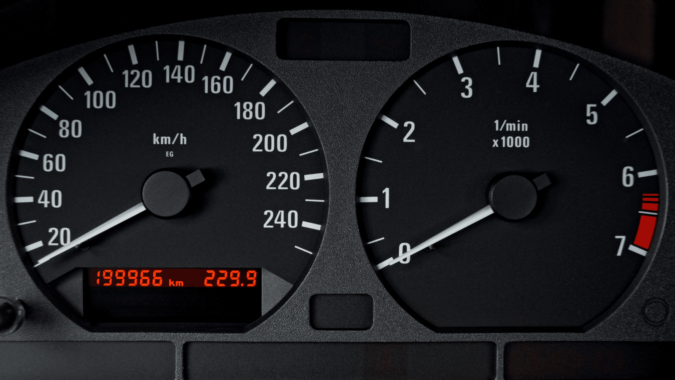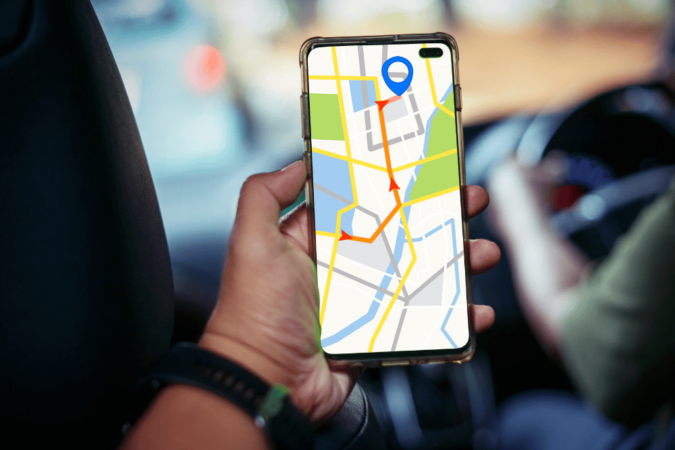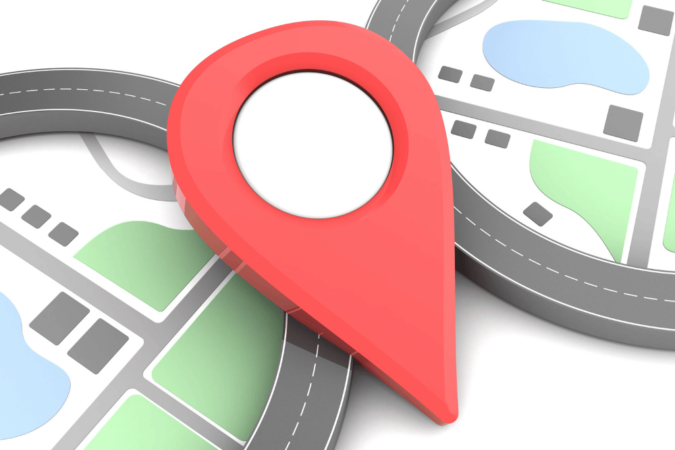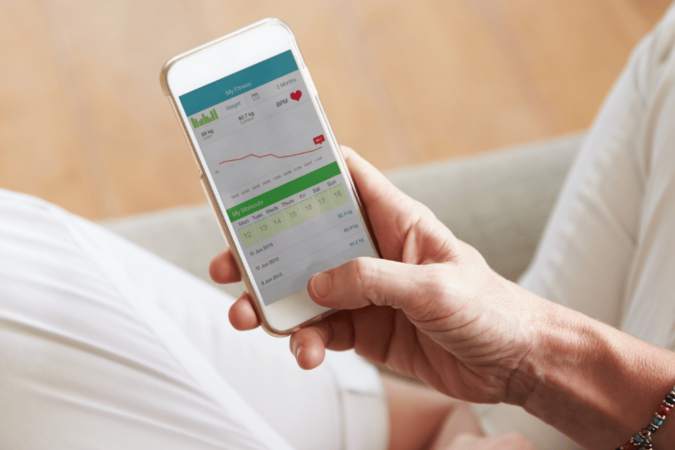
Doordash Mileage Tracker: A Dasher’s Guide

Did you know that the average DoorDash driver puts thousands of miles on their car each year? That’s a lot of driving! But are you capturing the full financial value of every single one of those miles? Many drivers unknowingly leave significant money on the table by not accurately tracking their mileage for deductions and expense management.
Imagine reclaiming hundreds, even thousands, of dollars each year. This article is your essential guide to understanding the ins and outs of DoorDash mileage tracking. We’ll cover everything from automatic trackers to maximizing your tax deductions , so you can drive with confidence and keep more of what you earn.
An Overview of the DoorDash Mileage Tracker

For independent contractors and business owners who use their vehicles for business, tracking mileage can be time-consuming and complicated. But with the DoorDash Mileage Tracker, you can easily monitor your miles automatically. Let’s break down the Mileage Tracker, how it works, and why it benefits businesses.
What is the DoorDash Mileage Tracker?
The DoorDash Mileage Tracker is an automatic mileage tracking system that allows users to track DoorDash mileage in real-time from their smartphone or computer with GPS technology. The app makes it easy to accurately record mileage and organize data into professional reports while eliminating manual entry errors. With this tool, you don’t need to worry about forgetting to start or stop a trip—the app takes care of all that for you.
→ Tracking miles with DoorDash? Stretch your savings with SelfGood’s affordable dental insurance coverage .
How Does It Work?
Using the Mileage Tracker is simple. All you have to do is download the mobile app or log on to your dashboard online. Then, activate the GPS tracking feature on your smartphone or computer and begin driving as usual. As soon as you start moving, the tracker automatically records your miles (it will pause when you stop). Then, when your trip ends, open up the app again and hit “stop”—all your business miles will have been recorded!
The tracker also has a built-in map view feature that lets you see exactly where each mile was driven in real-time. So you can quickly identify which mileage was related to business activities and which was not. Plus, you can export the data into a professionally formatted report for easy filing with the IRS at tax time!
For those who rely on their car for work, manually tracking miles can be tedious and error-prone. Fortunately, with the Mileage Tracker, anyone can easily track their mileage automatically without any extra hassle. In addition, this comprehensive system offers GPS tracking and an interactive map view. So users know exactly where they drove each mile—all without needing to keep paper logs or manually enter data into spreadsheets! So whether you’re an independent contractor or business owner who needs accurate records of business expenses, investing in the DoorDash Mileage Tracker is worth considering!
Does DoorDash Have an Automatic Mileage Tracking System?
Does DoorDash track mileage? If you are a delivery driver for DoorDash, you may wonder how the company tracks your mileage. Knowing this information is essential for your safety and understanding how to get reimbursed for mileage.
Of course, DoorDash does have an automatic mileage tracking system in place. The system uses GPS technology to track the distance you travel between each delivery and calculates the total length traveled at the end of each shift. However, it’s important to remember that GPS technology is imperfect. It can sometimes overestimate or underestimate traveled distances. Therefore, you must double-check their mileage totals at the end of each shift if they believe the system may have miscalculated.
You can use several manual methods to keep track of your miles instead of relying on Door dash’s automated system. For example, many drivers print out directions from Google Maps for each delivery and add the total miles at the end of their shift. Alternatively, smartphone apps such as MileIQ can manually track your miles without printing out directions from Google Maps. In addition, these apps quickly categorize trips as business or personal. So you can more accurately calculate how much they should reimburse you for your business expenses.
→ Need medical coverage that pays when driving for DoorDash? Check out SelfGood’s hospital indemnity plan with low rates and cash benefit payouts.
Benefits Of Using the DoorDash Mileage Tracker App

1. Automatically Track Mileage:
The DoorDash Mileage Tracker App automatically tracks the miles you drive for each delivery. It makes tracking your mileage and earnings easier.
2. Accurate Record Keeping:
The mileage tracking app ensures accurate record keeping by tracking your mileage using GPS technology. This makes it easy to pay taxes correctly and keep track of your mileage expenses.
3. Get Paid Faster:
The Tracker App makes it easier to get paid faster by calculating your business mileage in real-time. This means you won’t have to wait until the end of the month or year to get paid for your miles.
4. Get Detailed Reports:
The app provides detailed reports of your mileage, the time it took to deliver each order, and even the route you took. This makes it easier to identify any discrepancies in your mileage records.
5. Easy-to-Use Interface:
The Tracker App has a simple and easy-to-use interface. This makes it easy to use, even for non-tech-savvy people.
6. Compatible With Multiple Platforms:
The app is compatible with both Android and iOS devices, making it accessible to a wide range of users.
7. Monitor Driving Patterns:
The Tracker App also helps you monitor your driving patterns. This can help you identify any problems in your driving habits that might be causing you to rack up more miles than necessary.
8. Set Custom Mileage Rates:
The app allows you to customize the mileage rate for each order, making it easier to maximize your earnings.
9. Timely Notifications:
The app sends you timely notifications whenever a new delivery request occurs. This means that you won’t miss any orders, allowing you to maximize your earnings.
10. GPS-Based Payment System:
The Mileage App also has a GPS-based payment system. This makes it easier for you to get paid instantly whenever you finish a delivery.
11. Automated Reimbursement:
The app automates the reimbursement process, promptly paying you for your mileage.
12. Track Fuel Consumption:
The Tracker App also helps you track fuel consumption and identify areas to improve fuel efficiency.
13. Monitor Vehicle Performance:
The app also allows you to monitor your vehicle’s performance and identify any problems causing it to consume more fuel than necessary.
14. Easy Updates:
The DoorDash Tracker App is regularly updated, ensuring that the app continues to work without any issues.
15. Accessible Anywhere:
The app also allows you to access it from anywhere, making it easier to manage your DoorDash mileage tracking tasks on the go.
How to Track Your Mileage as a DoorDash Delivery Driver?

The most efficient way to track your mileage is by using an app on your smartphone or tablet. Several mileage-tracking apps are available for Android and iOS devices, making tracking your miles a breeze. Most apps allow you to quickly enter relevant data such as date, start time, end time, and total miles driven with just a few taps on the screen. Many apps also feature GPS-based tracking capabilities to accurately measure distances traveled even when no cell service is available.
Tracking your business miles is essential when filing taxes. The Internal Revenue Service (IRS) requires you to keep accurate records to deduct vehicle expenses from your taxable income. For example, when filing taxes as a delivery driver, you may be able to deduct actual car expenses, such as gas and maintenance costs, and standard mileage deductions based on the number of miles driven for business purposes. However, accurate records must be kept annually to take advantage of these deductions. That’s where having an up-to-date mileage log becomes invaluable.
DoorDash Track Miles Feature
Fortunately, DoorDash makes it easy for drivers to track their miles by providing access to their Track Miles feature via the DoorDash Dashboard app on their smartphones or tablet devices. This feature allows drivers to view past trips along with information about each trip, including total distance traveled and duration time spent driving during each trip. In addition, this information can be exported into digital formats such as Microsoft Excel or Apple Numbers files for tax preparation or other record-keeping needs.
As a DoorDash delivery driver, it’s essential to keep accurate records of all miles driven throughout the year—not just for tax payments but also for business reasons! Fortunately, DoorDash makes it easy for drivers to track their miles with its convenient Track Miles feature within its Dashboard app. With this handy tool, tracking your mileage has never been easier!
Maximizing Earnings Potential As a Delivery Driver with Mileage Tracker
As a DoorDash driver, you’re constantly on the move. Every mile you drive brings you one step closer to that next delivery and closer to maximizing your earnings potential. DoorDash’s mileage tracker is an invaluable tool for drivers looking to track their miles and improve their performance. Let’s explore how this useful feature can help make your work even more efficient.
The Basics of the Mileage Tracker
DoorDash’s mileage tracker is designed to help drivers track their driving distance and optimize their routes between deliveries, so they can maximize their earnings and reduce the time spent on each delivery. The tracker uses GPS tracking technology to measure the total distance driven by each driver and the duration of each delivery trip. This data is then used to estimate how much money a driver could make based on those distances.
Using The Mileage Tracker To Improve Your Driving Habits
The mileage tracker can also improve driving habits by providing valuable insights into fuel efficiency, speed management, and route optimization. By monitoring your driving patterns and analyzing your data over time, you can identify opportunities for improvement in areas such as accelerating too quickly or taking longer routes than necessary to reach destinations. Additionally, using the data from the mileage tracker can help you create better ways for future deliveries to maximize your time spent on the go without sacrificing earnings potential or customer service satisfaction levels.
Maximizing Earnings with The Mileage Tracker
In addition to helping drivers improve at what they do, the mileage tracker also provides an excellent way to maximize their earnings potential by tracking how much money they could earn per mile driven. Drivers can use this information to plan better routes considering the distance and estimated earnings per mile traveled to maximize every delivery trip while delivering excellent customer service standards.
Overall, DoorDash’s mileage tracker is invaluable for any driver looking to improve their performance and maximize their earning potential while out on deliveries. With its comprehensive tracking capabilities and detailed insights into driving behavior, this feature provides drivers with everything they need to stay safe while increasing profits from each delivery trip. Whether you’re a new or experienced driver, using this feature will undoubtedly help improve your overall performance as a DoorDash driver!
How Do Mileage Trackers Help Delivery Drivers with Tax Deductions?

For delivery drivers, accurately tracking their mileage is a crucial part of keeping accurate records for tax deductions. Fortunately, several tools make tracking mileage easier. Let’s look at how DoorDash mileage trackers help delivery drivers with their taxes and why they should be used.
Understanding the Importance of Tracking Miles
Accurate records of your business miles are essential for claiming the correct amount on your taxes. The IRS offers a standard mileage rate deduction, allowing drivers to deduct a specific amount per mile for business purposes (check the current rate for the relevant year). However, that rate can add up quickly if you go hundreds or thousands of miles each year – so it’s essential to keep track of your miles accurately. Understanding your tax obligations is also crucial, and resources like our guide on how to get your DoorDash 1099 can be very helpful. Furthermore, when filing taxes, you might need to know your DoorDash business code, which categorizes your business activity for the IRS.
Using a Mileage Tracker Tool
Mileage tracking tools are designed to make it easy for delivery drivers to keep track of their business miles and calculate their deductions accurately. Most mileage tracker tools offer GPS tracking and automated distance calculations. The tool offers customizable reports that can be easily exported into a spreadsheet program like Excel or Google Sheets for tax purposes. Additionally, many of these tools offer integrations with other services, such as accounting software programs like Quickbooks, to ensure that all records remain accurate and up-to-date.
Advantages of Using Mileage Trackers
The advantages of using a dedicated mileage tracker tool are numerous. Not only will you save time by having all your data automatically tracked and calculated. You will also be assured that your mileage information is organized and easily accessible when it comes to your taxes. Additionally, some of these tools are free or come with discounted rates for commercial users – making them an affordable option for busy delivery drivers who need reliable tracking solutions without breaking the bank.
Mileage trackers are an invaluable tool for delivery drivers who need accurate records for tax deductions each year. By taking advantage of the features offered by these specialized tools, drivers can save time and money while ensuring that all their records are kept up-to-date and organized correctly. With all these benefits, it’s no wonder more delivery drivers are turning towards mileage tracker apps to simplify their tax deductions process!
Tips for Maximizing Your Miles with the DoorDash Mileage Tracker
If you’re a Dasher working with DoorDash, you know how important it is to maximize your miles tracked. A mileage tracker is an essential tool that helps you maximize your earnings by ensuring you get credit for every mile you drive. Here are some tips and tricks to help you get the most out of this essential feature.
Know How It Works
The first step in getting the most out of the mileage tracker is understanding how it works. For example, when delivering food orders, the mileage tracker will track your route from when you leave home or the restaurant (depending on where your order originated) until you arrive at your destination, usually a customer’s home address. Once this route has been logged, the mileage tracker will calculate the distance traveled and add it to your total earnings for that delivery.
Make Use Of The Map Feature
Another way to ensure that all your miles are tracked correctly is to use the map feature when creating your route. With this feature, you can drag and drop points along a map to ensure that all necessary stops are included in your way. This ensures that no mile goes unaccounted for so that you can get full credit for each delivery.
Be Aware Of Any Detours
If any detours in between orders or traffic cause delays on a route, be aware of them and be sure to adjust accordingly for them to be tracked accurately by the system. Also, remember that any “free-form” routes will not be accounted for unless they are manually added via map points or other means. Lastly, remember that if any significant changes are made while en route—such as rerouting due to traffic or bad weather—you should update them in real time within the app to reflect them in your total earnings.
DoorDash’s mileage tracker is essential for maximizing your earnings as a Dasher, but only if used correctly. By understanding how it works, using its features such as map points, and tracking any detours en route, you can ensure that your miles are accurately followed and reflected in your weekly earnings. With these tips and tricks, there’s no reason why maximizing miles with DoorDash should ever be a challenge!
Final Words
Remember, as a self-employed individual, it’s important to consider your benefits – explore our resources on dental insurance, and health.
As you navigate the roads as a DoorDash driver , remember that every mile you drive is valuable. Utilizing a mileage tracker isn’t just about record-keeping; it’s about empowering yourself with the financial insights you need to thrive in the gig economy. By accurately tracking your mileage, you’re not only preparing for tax season, but you’re also gaining a deeper understanding of your driving habits, fuel efficiency, and overall business performance. So, equip yourself with the right tools, embrace the power of data-driven driving, and take charge of your earnings potential. The road to maximizing your DoorDash success is paved with accurately tracked miles. To learn more about being a DoorDash delivery driver, read our other blogs for more tips and tricks.
Frequently Asked Questions About DoorDash Mileage Tracking
How do taxes work if I drive for DoorDash? Does DoorDash withhold taxes from my pay?
As a DoorDash driver, you’re considered an independent contractor, meaning DoorDash doesn’t withhold taxes from your earnings. You are responsible for managing your own income tax and self-employment tax, including estimated taxes throughout the year. This is why diligently tracking your mileage and identifying other eligible business expenses is so important – it directly impacts your taxable income and can significantly lower your overall tax liability.
Does DoorDash reimburse drivers for mileage?
No, DoorDash does not directly pay drivers for their mileage. However, this is where mileage tracking becomes crucial for your financial benefit. By meticulously tracking your business miles, you can claim a mileage deduction on your taxes, which effectively reduces your taxable income and your overall tax bill. In this way, mileage tracking is how you “get paid” for your miles, through tax savings.
How can I deduct gas and car expenses as a DoorDash driver?
When it comes to deducting vehicle expenses for your DoorDash business, the IRS offers two main methods. The actual expense method allows you to deduct the real costs of operating your vehicle for business (like gas, oil changes, repairs, insurance). This requires detailed records and receipts for all vehicle expenses. The standard mileage method, on the other hand, is simpler. You deduct a standard rate for every business mile you drive. This method requires a detailed mileage log, but you don’t need to track every individual car expense separately.
Can I rely on the DoorDash app to track my mileage for tax purposes?
While the DoorDash app might show you trip distances for delivery management, it’s not designed for accurate mileage tracking for tax deductions. The app’s mileage data is often an estimate and may not capture all deductible miles, such as miles driven between orders or for errands related to your business. Therefore, relying solely on the DoorDash app for tax mileage records is not recommended.
Can I download a mileage report directly from DoorDash?
No, DoorDash does not offer a downloadable mileage report that is suitable for tax purposes. The mileage information within the DoorDash platform is primarily for operational purposes and is not intended to serve as an official, IRS-compliant mileage log.
What’s the best way to track my DoorDash mileage?
The most reliable method is to use a dedicated mileage tracking app designed for business purposes. Start tracking your miles from the moment you begin your work day – that is, when you leave your home or starting point to begin deliveries – and continue tracking until you are finished with deliveries for the day. This ensures you capture all potentially deductible business miles.
What features should I look for in a good mileage tracker app for DoorDash?
When choosing a mileage tracking app for your DoorDash driving, prioritize features that ensure accuracy and ease of use. Key features include automatic mileage tracking (using GPS), simple categorization of trips as business or personal, detailed and IRS-compliant reporting, and a user-friendly interface. Bonus features might include fuel tracking and expense logging.





